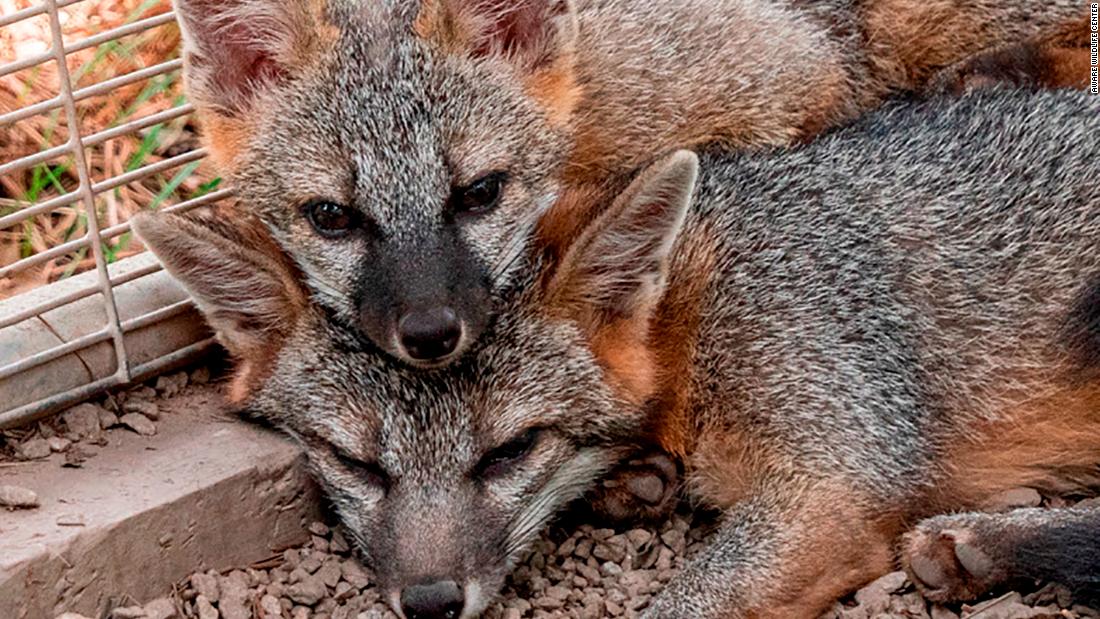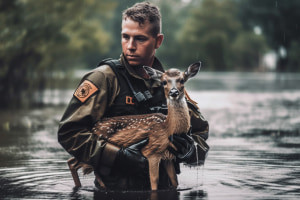Discover Professional Providers in Wildlife Rescue Burlington for Citizen Animals
Discover Professional Providers in Wildlife Rescue Burlington for Citizen Animals
Blog Article
The Function of Humane Wildlife Removal in Protecting Citizen Ecosystems
Humane wildlife removal is not simply a moral factor to consider but an essential component in securing regional ecological communities. By prioritizing non-lethal methods, it addresses the fragile equilibrium between human development and wildlife habitat preservation. This strategy not only mitigates disputes however also guarantees the sustainability of biodiversity. The performance of these techniques warrants further evaluation, particularly in city settings where human-wildlife communications are significantly complicated. As we consider the effects of our techniques and their effect on environmental consistency, one must wonder about how these practices can be maximized to cultivate an extra cooperative relationship with nature.
Comprehending Human-Wildlife Conflicts
Human-wildlife problems commonly develop when the all-natural habitats of animals intersect with human activities, bring about competitors for sources and room. As urbanization and farming growth continue to intrude upon wildlife territories, pets such as raccoons, deer, and prairie wolves locate themselves in closer closeness to human populations. This proximity can cause detrimental influence on both wildlife and human beings, as animals might cause damages to crops, framework, and personal effects while people may inadvertently damage wildlife with habitat devastation and various other anthropogenic pressures.
The complexity of these problems stems from a range of elements. Changes in land use, environment change, and the fragmentation of ecosystems frequently require wildlife to adapt to brand-new settings, often leading them into business or residential locations. In addition, the schedule of human-generated food resources, such as rubbish and pet food, can bring in wild animals to human settlements, aggravating communications and possible conflicts.
Addressing human-wildlife disputes calls for a nuanced understanding of pet habits, environmental characteristics, and socio-economic considerations. By studying these policymakers, interactions and preservationists can establish strategies that aim to mitigate conflicts while protecting biodiversity and preserving eco-friendly balance. The goal is to foster coexistence and reduce adverse influence on both human communities and wild animals populations.
Importance of Non-Lethal Techniques
Non-lethal methods of wildlife elimination personify this principles by offering options that avoid injury to wildlife while resolving human problems. By using such methods, we can take care of wild animals communications without resorting to deadly actions, thus preserving animal populaces and reducing moral concerns connected with killing.
These methods frequently confirm a lot more efficient in the long term, as eliminating individual pets can develop a void that is rapidly loaded by other members of the types or different species completely. This can lead to a cycle of ongoing elimination initiatives, whereas non-lethal deterrents deal with the root creates of wildlife presence.
Furthermore, non-lethal strategies foster conjunction by enlightening the public about wildlife actions and motivating unified living practices. This recognition can lead to a lot more lasting human-wildlife interactions, ultimately protecting both area interests and animal welfare.
Advantages for Biodiversity
When non-lethal wildlife removal approaches are used, they contribute substantially to biodiversity preservation. By ensuring the safe relocation of pets instead than their removal, these techniques preserve ecological balance and safeguard the integrity of communities.

In addition, these techniques cultivate coexistence in between people and wild animals, lowering negative communications and protecting the abundant tapestry of life that characterizes biodiverse areas. This technique encourages a much deeper understanding and respect for wildlife, promoting community support for preservation initiatives. Eventually, humane wild animals removal is a vital element in protecting biodiversity, guaranteeing environments continue to be practical and vivid for future generations.
Techniques for Effective Removal
Executing efficient strategies for humane wild animals removal calls for an extensive understanding of animal habits and environment needs. This expertise offers as the structure for establishing techniques that make certain the safe and moral relocation of wild animals.
Another essential method is utilizing exclusion techniques, which concentrate on sealing entry indicate stop pets from returning to structures. This technique not just resolves the prompt problem however additionally serves as a long-term solution, reducing future disputes in between people and wild animals. The usage of safe deterrents and repellents can urge animals to vacate areas voluntarily, complementing other removal initiatives.
Capture and relocation should always be a last option, employed just when pets pose a direct hazard or are not able to exit by themselves. In such cases, making use of humane catches and making sure the release of animals in suitable environments are important to securing their welfare. Partnership with wildlife experts and adherence to lawful regulations better boost the efficiency of these approaches.

Promoting Conjunction in Urban Locations
Promoting conjunction in city areas requires a multifaceted method that balances human advancement with the requirements of regional wild animals. Urban policymakers and coordinators need to integrate green rooms, such as parks and wild animals hallways, into city styles to give habitats for indigenous varieties. wildlife removal Burlington.
Education and learning and recognition campaigns are crucial in fostering a society of coexistence. Residents need to understand the relevance of wild animals and the function they play in local ecosystems. resource Workshops and informational sessions can outfit areas with understanding on how to lessen problems, such as safeguarding trash and using gentle deterrents to stop wildlife breach.
Furthermore, technology can play a considerable duty in promoting conjunction. Using wild animals tracking systems, for instance, can help track animal activities and inform city planning choices. Collaborations in between ecological companies, regional governments, and neighborhood teams can even more strengthen these initiatives, guaranteeing that city development proceeds sustainably while appreciating the environmental equilibrium.
Final Thought
Humane wildlife elimination is important for preserving environmental balance and biodiversity by employing non-lethal approaches that lower injury to pet populations. Eventually, advertising conjunction in city locations fosters an unified connection in between people and the all-natural atmosphere, go to my blog making certain lasting ecosystems for future generations.
As urbanization and farming expansion continue to encroach upon wildlife territories, animals such as deer, prairie wolves, and raccoons locate themselves in closer proximity to human populaces. Non-lethal approaches of wildlife removal embody this principles by providing options that stop harm to wildlife while dealing with human concerns. By employing such strategies, we can manage wild animals interactions without resorting to dangerous actions, consequently maintaining animal populaces and reducing honest problems connected with murder.
Implementing reliable approaches for check that humane wild animals removal needs a comprehensive understanding of animal actions and environment requirements.Humane wildlife elimination is essential for keeping eco-friendly equilibrium and biodiversity by using non-lethal methods that reduce harm to animal populaces.
Report this page